The comforting weeknight dinner – One Pot Nikujaga! This easy Japanese Beef and Potato Stew takes only 20 minutes to cook, perfect with a side serve of piping hot sushi rice.
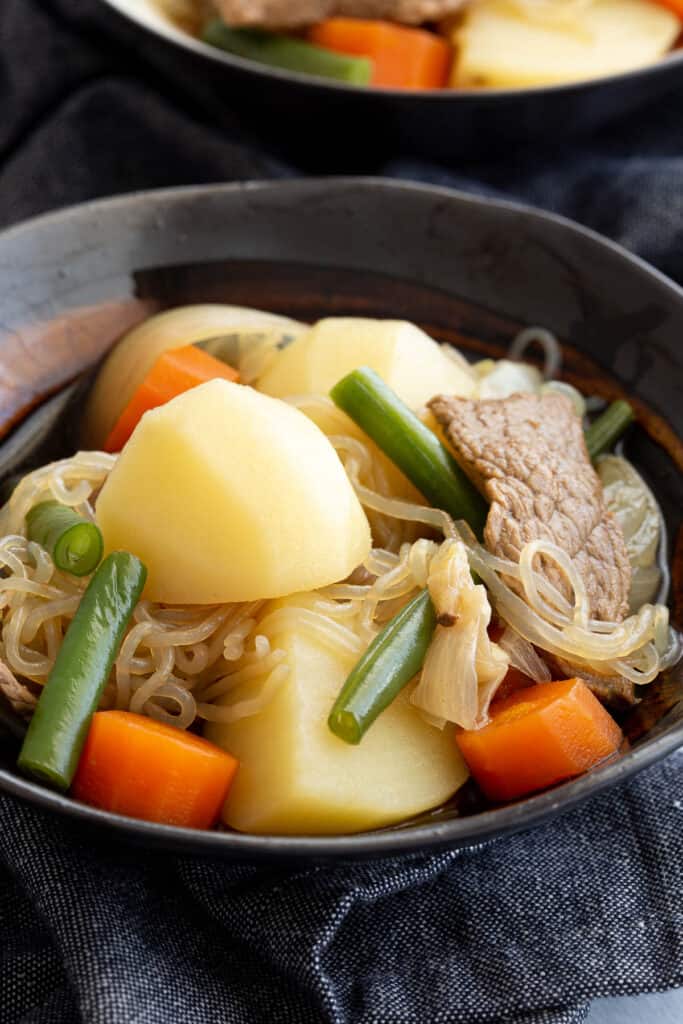
Why We Love This
Nikujaga is like the Japanese equivalent of chicken noodle soup. It makes you feel loved and warm, with the broth nice and light, so it doesn’t sit heavy in your tum. Cooked in the one pot, there’s also no need for a heap of dishes!
By using a drop lid to cook the ingredients, the potato and carrot go extra soft while still keeping their structure. It’s fascinating to see and taste. We think the potato is so soft when you bite into it, it’s like mash!
Related: Nikumiso Meat Sauce / Hungarian Goulash / Japanese Beef Curry
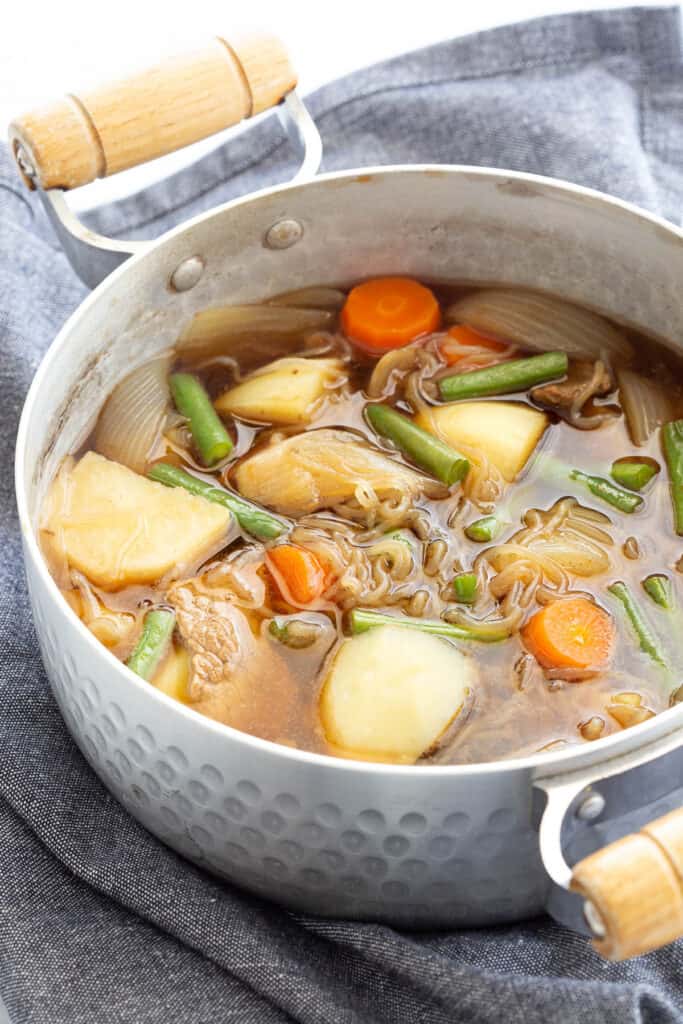
What is Nikujaga?
Nikujaga is a light Japanese beef and potato stew. Originally created by chefs from the Imperial Japanese Navy, it’s now a common weeknight dish found in households and restaurants throughout Japan.
The staple ingredients are usually thin strips of beef alongside onion, carrot, shirataki noodles and the star of the dish – potatoes. Cooked using a drop lid known at otoshibuta, everything is cooked to perfection, maintaining shape and structure while absorbing the flavours of the stock and seasoning.
Where We Learned This
It was down a flight of stairs, another floor or two in an elevator and through a inconspicuous white door that we entered into an underground pub in Osaka, Japan.
Owned by our friend Rena and her husband, we were shuffled into the tiny kitchen behind the bar with ingredients laid out and a handwritten recipe for their version of Nikujaga and miso soup.
What followed was AC/DC playing on a projector in the background, their friends joining us for a sushi party, and wonderful conversation in a variety of broken English and Japanese.
What You’ll Need
- Meat – Thinly sliced beef shabu shabu style works best. You can also use Aussie sizzle steak. Sub with thin pork slices, chopped chicken, beef mince or firm tofu.
- Potatoes – Medium sized potatoes, quartered work well. Chop into 6 for larger potatoes. White or yukon gold potatoes are nice and creamy in this dish.
- Shirataki Noodles – Also known as konnyaku / konjac / super low cal noodles. Sub with sweet potato noodles, vermicelli, ramen noodles or omit altogether.
- Onion – Regular brown or white onions add a nice sweetness to the dish.
- Green Beans – Regular fresh or frozen green beans are delicious. Sub with snow peas, asparagus or corn.
- Dashi Stock – Whether fresh or powdered, this gives nikujaga the classic umami flavour you want your veggies to absorb.
- Soy Sauce – Regular soy sauce is best, sub with tamari.
- Cooking Sake – Sake can be expensive in some areas, so sub with Chinese rice wine if required. You can also omit, and replace the same amount with more mirin.
- Sugar – Essential to giving the authentic nikujaga flavour. Sub with honey, molasses or golden syrup for a richer sweetness.
- Mirin – This sweet rice wine helps to bring both depth and sweetness to the broth.
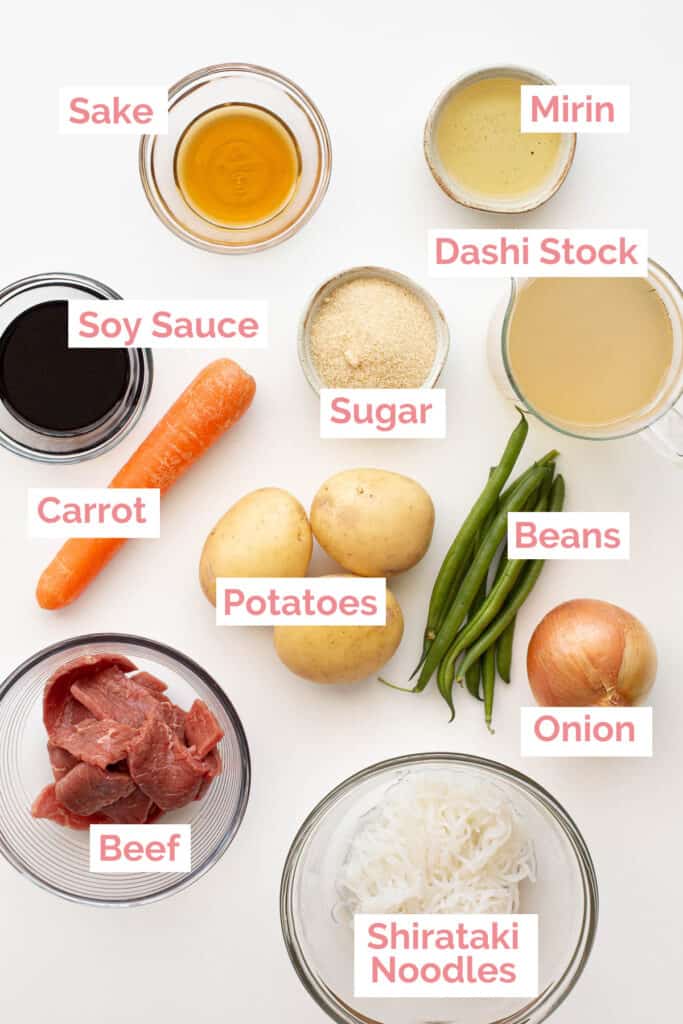
How to make Japanese Beef and Potato Stew:
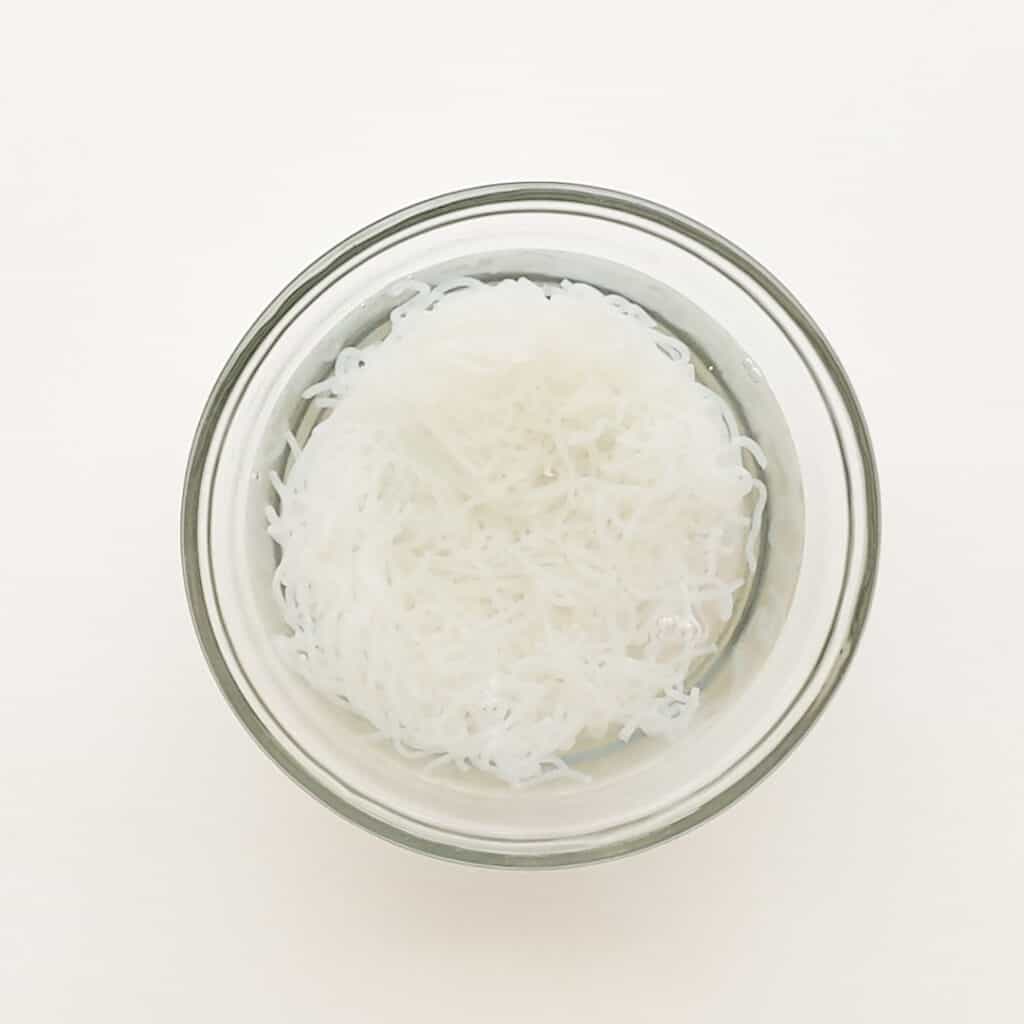
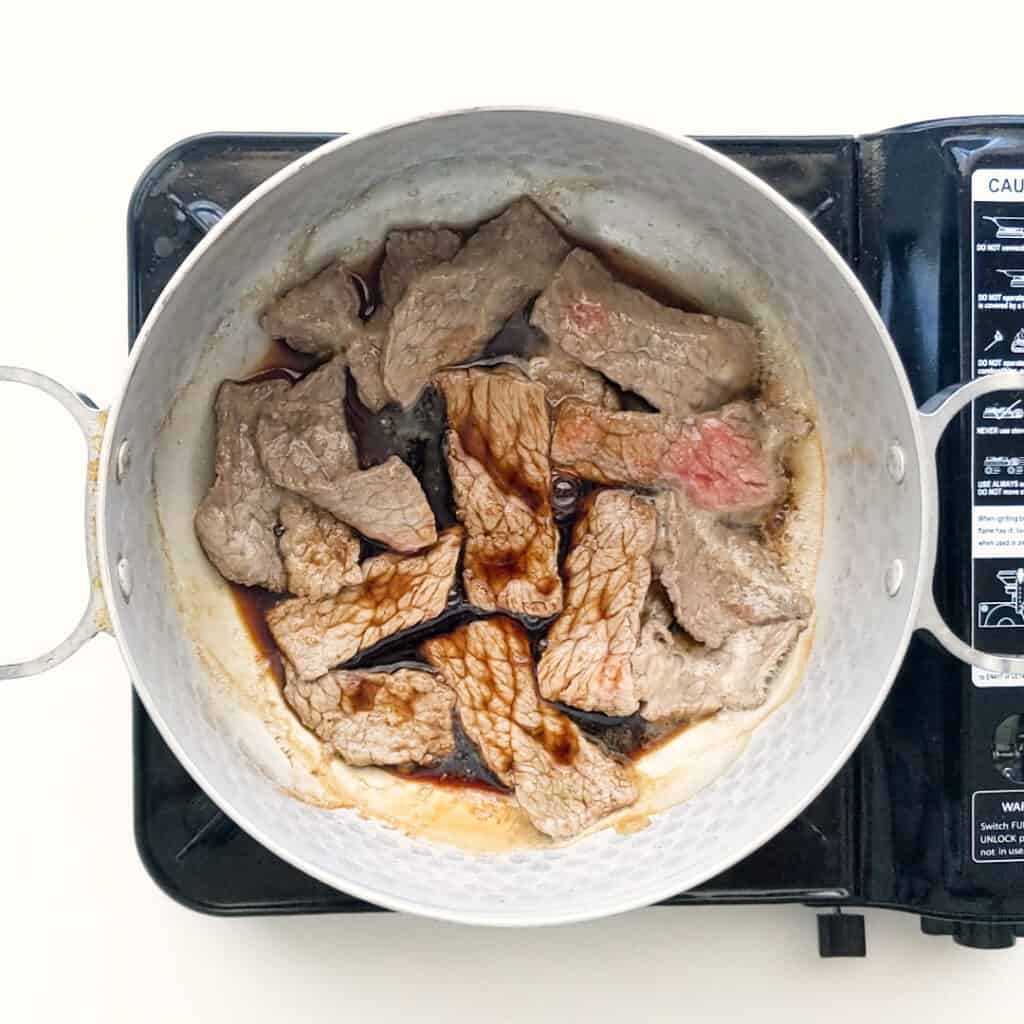
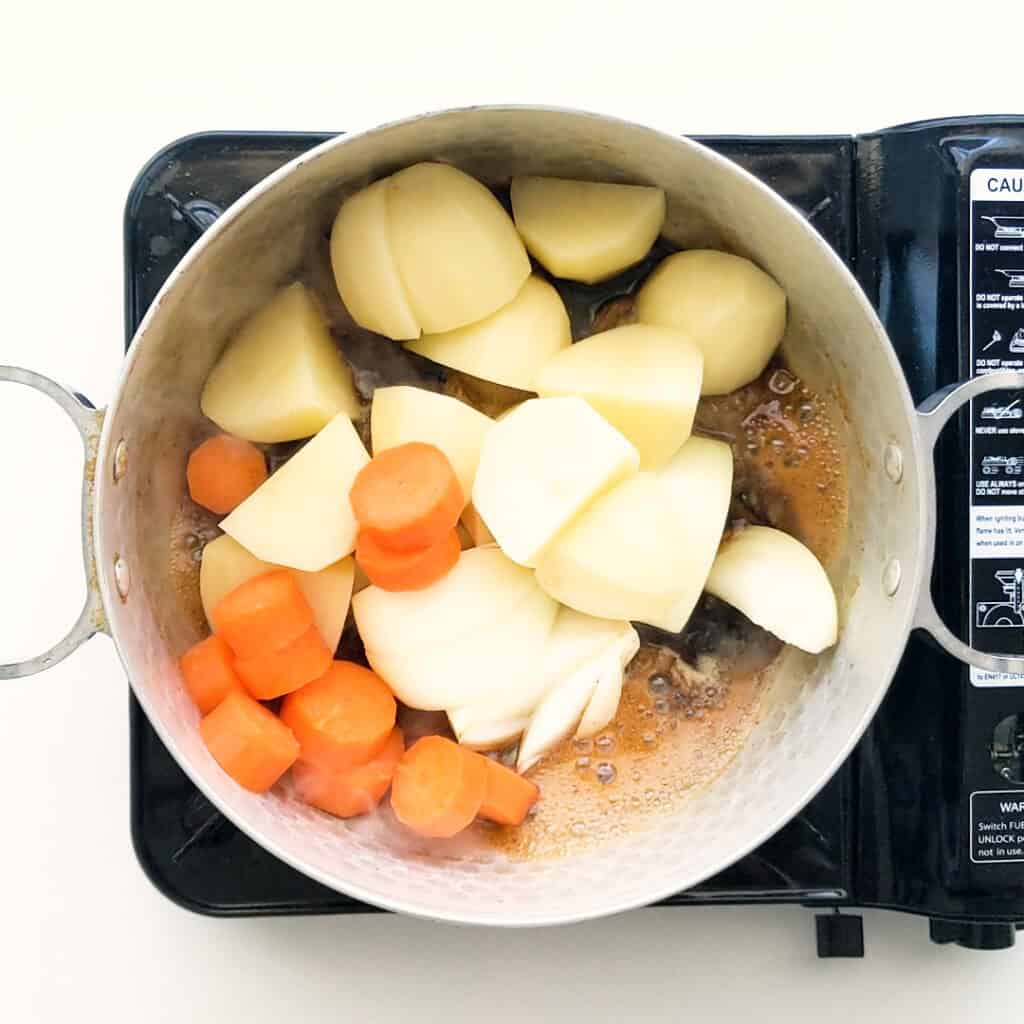
- Remove shirataki noodles from the packet and cut roughly in half. Place in a bowl and cover with boiling water for a few minutes. Drain and set aside.
- Pour the vegetable oil in a medium saucepan over medium high heat. Add the thinly sliced beef strips and fry for a minute or two until brown. Pour in the soy sauce, sake, sugar and mirin and allow the meat to soak up the flavours for a further 1-2 minutes.
- Next, add the potatoes, carrot and onion. Mix together then pour in the drained shirataki noodles. Frying for another minute or two.
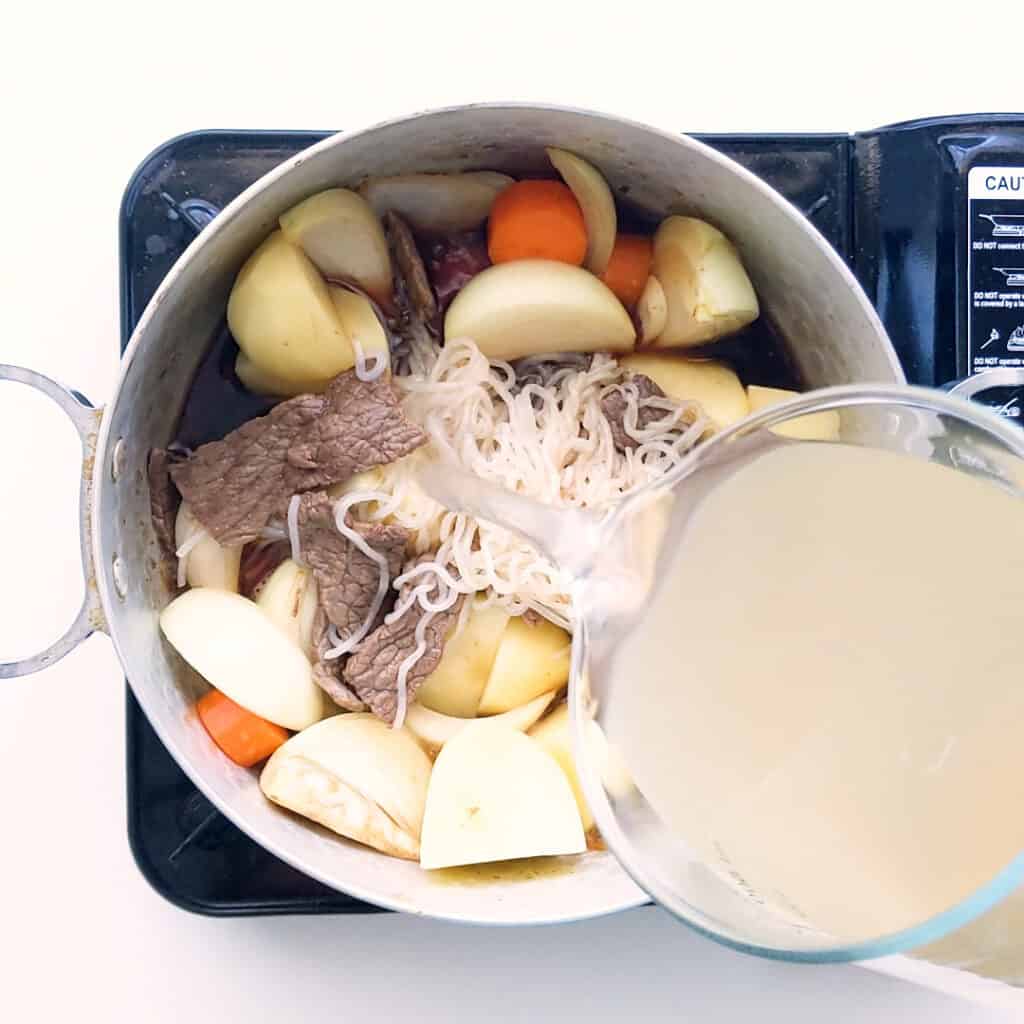
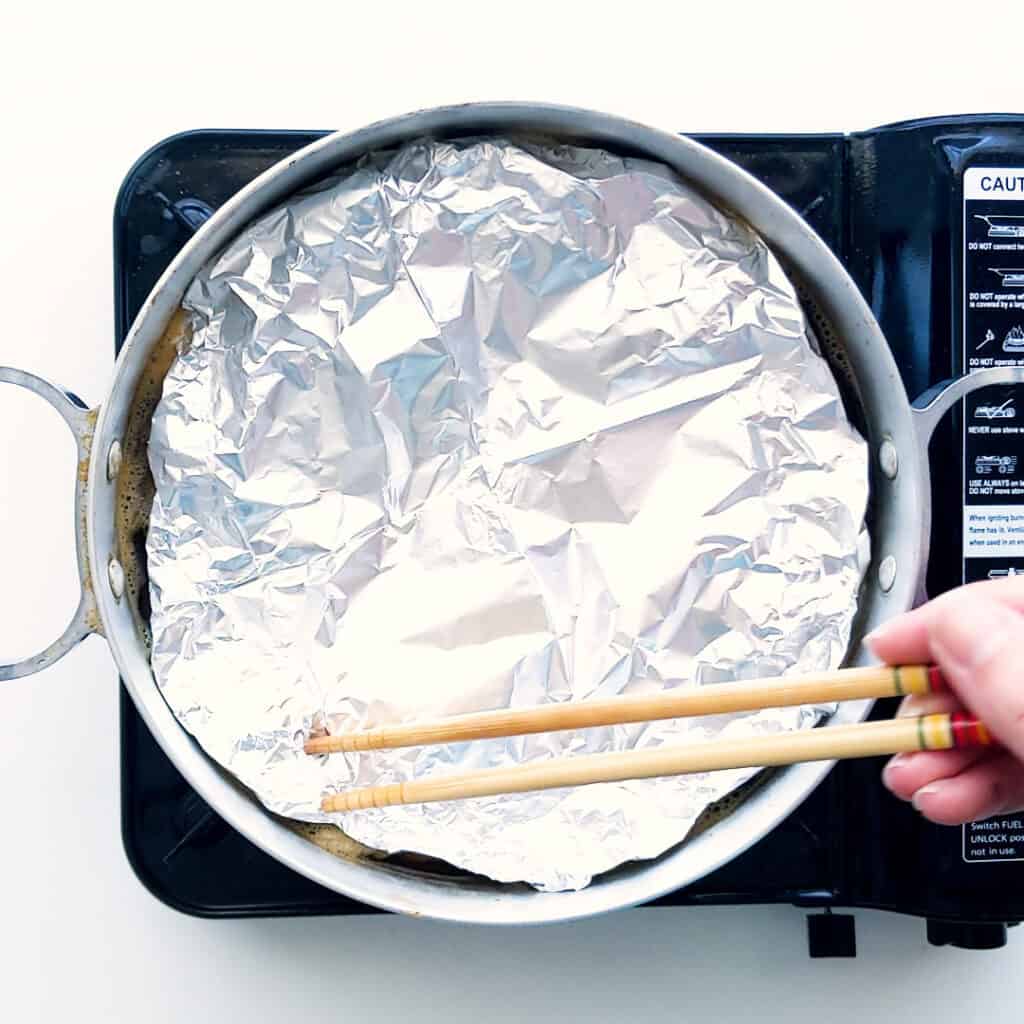
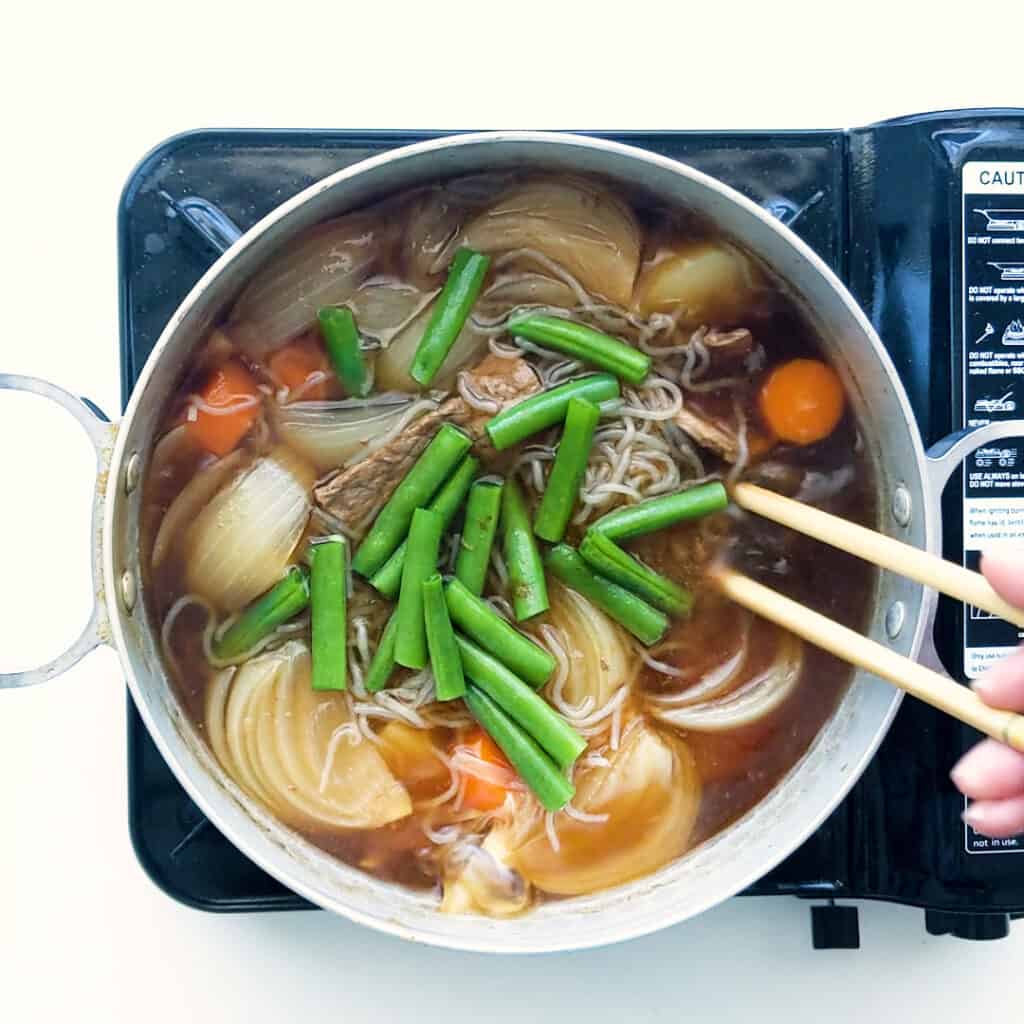
- Pour in the dashi stock and bring to a boil, then reduce heat to simmer on low medium heat.
- Scoop off any foam on top with a spoon and give everything a gentle stir, then cover with a lid or otoshibuta (Japanese drop lid – you can also use aluminium foil or paper towel). Simmer for a further 10 minutes or until the potatoes are cooked through and soft. Note: You can check potatoes with a fork or chopstick.
- Remove the lid or otoshibuta and pop your green beans on top, allowing them to cook for a minute before switching off the heat.
- Serve immediately, or allow to cool then pop in the fridge until you’re ready to reheat on a low simmer. This will allow the flavours to develop over time.
Cooking with Otoshibuta 落し蓋 / Drop Lid – FAQ
What are otoshibuta?
An otoshibuta is a drop lid, meaning a lid that sits on top of the food in a saucepan, rather than a regular saucepan lid. Hence the term ‘drop’. This lid allows three very important things to happen:
1. The heat is evenly distributed across the dish during the simmering process.
2. All the ingredients are held in place, preventing them from knocking into each other and breaking down.
3. It helps move the liquid around the dish so there’s no need to stir it!
What are the different types?
Drop lids in Japan are either made from wood at a fixed size to suit one pan, or made from metal and adaptable in size. We recommend the metal otoshibuta as it’s more versatile with the sizes to suit your existing pots and pans, and it can double as a steamer, so you can use it to make dishes like seri muka.
Can you make drop lids at home?
Homemade drop lids are simple to make if you prefer. Either lay a sheet of paper towel on top, or shape aluminium foil to just smaller than the pan width and place on top.
Wandercook’s Tips
- Sweetness – While we love the traditional sweetness of nikujaga, feel free to halve or omit the sugar for a more savoury result.
- Maximise Flavour – For the best taste, we recommend cooking nikujaga the day before or in the morning, so the flavours have a chance to really soak into all the meat and vegetables.
- Storage – Nikujaga stores well in the fridge for 2-3 days. To reheat, simply simmer on the stove on a low medium heat, or pop in the microwave for a minute or two until warmed to your preferred temperature.
FAQs
Shirataki noodles, sometimes referred to as konnyaku, are noodles made from the konjac root. They are super low in calories, and popular in Asian dishes. The noodles do have a slight smell, which disappears once cooked.
Nikujaga is a light stew, and works well served with a few accompaniments. Plain sushi rice and miso soup are very popular choices. You could also make it a three course meal, serving gyoza to start and finishing with daifuku mochi.
Variations
- Make it Vegan – Sub the dashi for kombu dashi, and the beef for mushrooms (shiitake, oyster and /or enoki) or firm tofu for a vegan nikujaga.
- Kanto Style Nikujaga – Swap the beef slices for thinly sliced pork instead, a popular choice in the Kanto region of Japan.
- Omit Shirataki – The shirataki noodles are not the star of the dish, so if you can’t find them – just leave them out, or add in a little extra veggies.
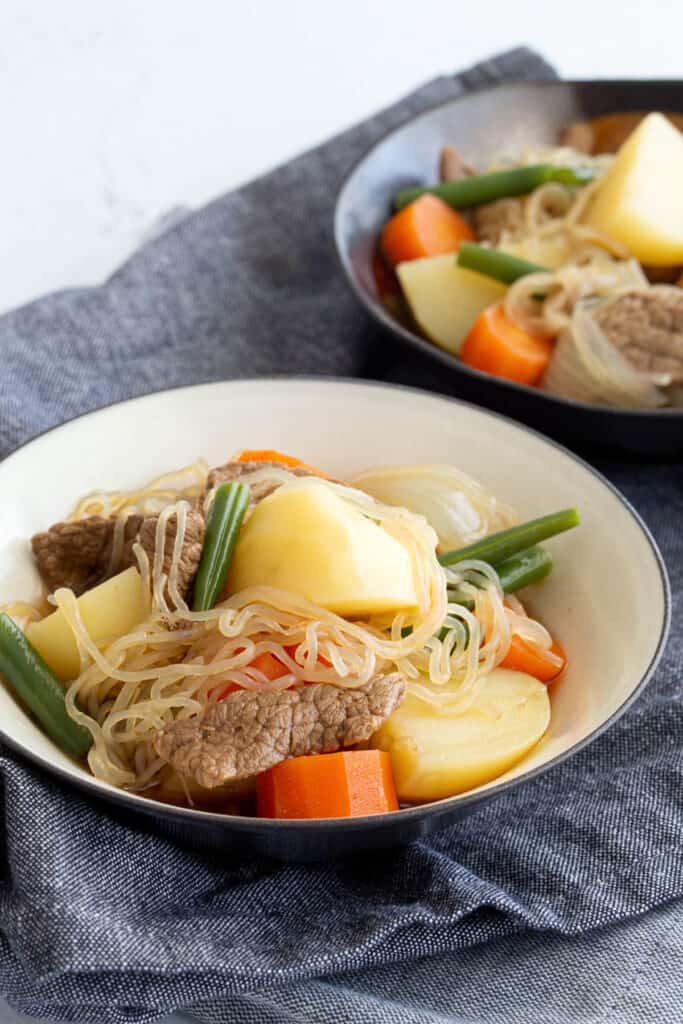
Make it a feast with these classic Japanese dishes:
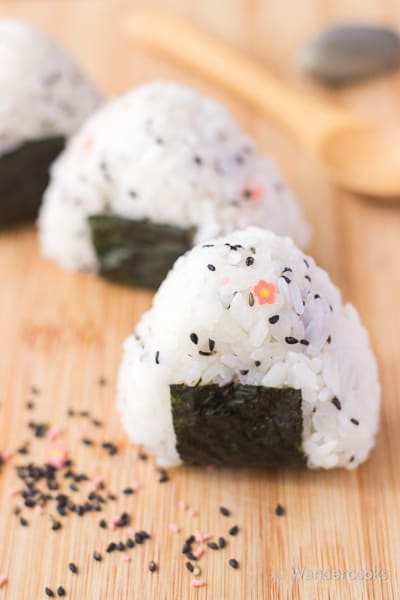
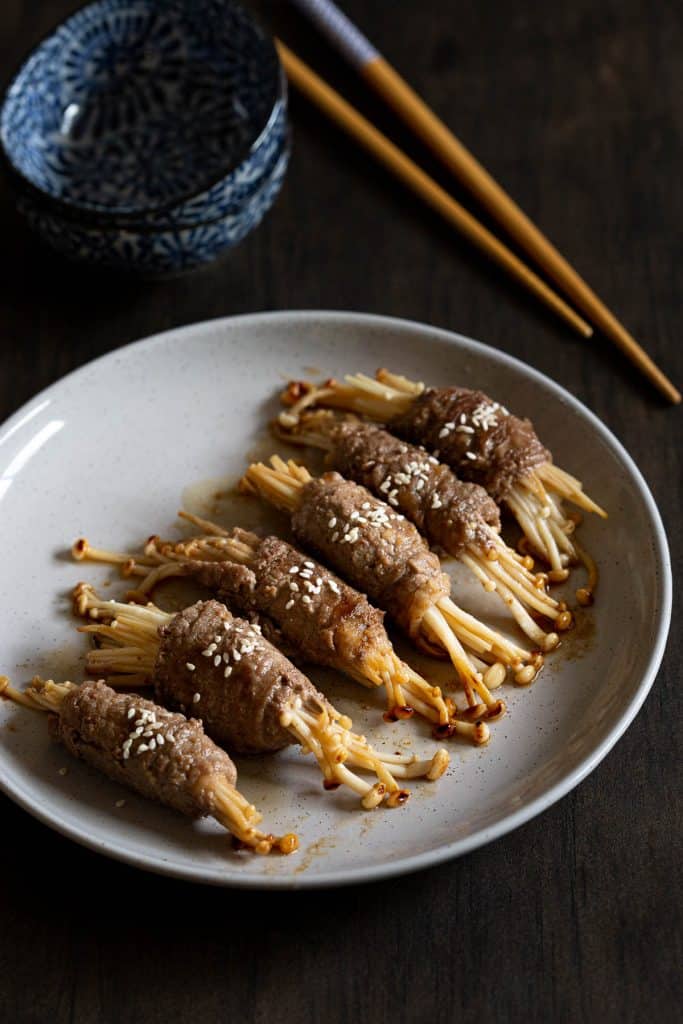

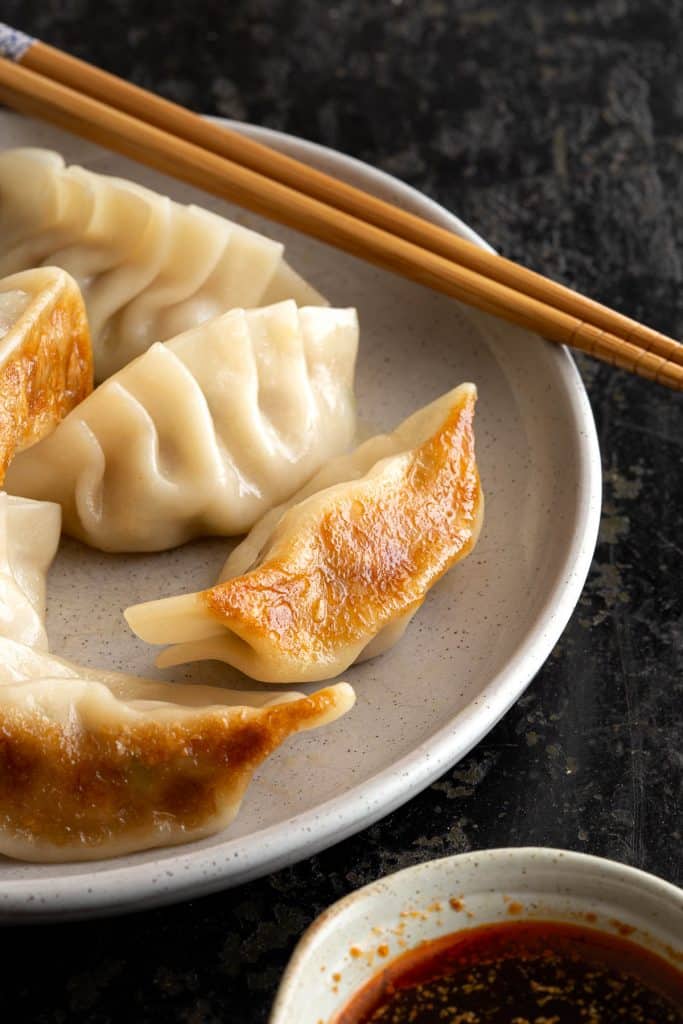
★ Did you make this recipe? Please leave a comment and a star rating below!
Equipment
Ingredients
- 150 g thinly sliced beef cut into strips, use shabu shabu meat or sizzle steak works well in Australia
- 3 potatoes medium size, diced, 350g / 12.34oz
- 1 carrot small
- 100 g shirataki noodles (usually half a packet / 3.52oz) konnyaku / konjac low cal noodles, sub sweet potato noodles
- 1 onion quartered, white or brown onions
- 1 handful green beans roughly chopped, sub snow peas or asparagus
- 2 ½ cups dashi stock (2.5 tsp dashi powder + 625ml / 1.3 pints water)
- ¼ cup soy sauce + 1 tbsp, 65ml / 2.19fl oz
- ¼ cup sake sub Chinese rice wine, 30ml / 1.35fl oz
- 3 tbsp sugar 45g / 1.58oz
- 2 tbsp mirin
- 1 tbsp vegetable oil
Instructions
- Remove shirataki noodles from the packet and cut roughly in half. Place in a bowl and cover with boiling water for a few minutes. Drain and set aside.100 g shirataki noodles
- Pour the vegetable oil in a medium saucepan over medium high heat. Add the thinly sliced beef strips and fry for a minute or two until brown. Pour in the soy sauce, sake, sugar and mirin and allow the meat to soak up the flavours for a further 1-2 minutes.150 g thinly sliced beef, ¼ cup soy sauce, ¼ cup sake, 3 tbsp sugar, 1 tbsp vegetable oil, 2 tbsp mirin
- Next, add the potatoes, carrot and onion. Mix together then pour in the drained shirataki noodles. Frying for another minute or two.3 potatoes, 1 carrot, 1 onion
- Pour in the dashi stock and bring to a boil, then reduce heat to simmer on low medium heat.2 ½ cups dashi stock
- Scoop off any foam on top with a spoon and give everything a gentle stir, then cover with a lid or otoshibuta (Japanese drop lid – you can also use aluminium foil or paper towel). Simmer for a further 10 minutes or until the potatoes are cooked through and soft. Note: You can check potatoes with a fork or chopstick.
- Remove the lid or otoshibuta and pop your green beans on top, allowing them to cook for a minute before switching off the heat.1 handful green beans
- Serve immediately, or allow to cool then pop in the fridge until you’re ready to reheat on a low simmer. This will allow the flavours to develop over time.
Video
Nutrition
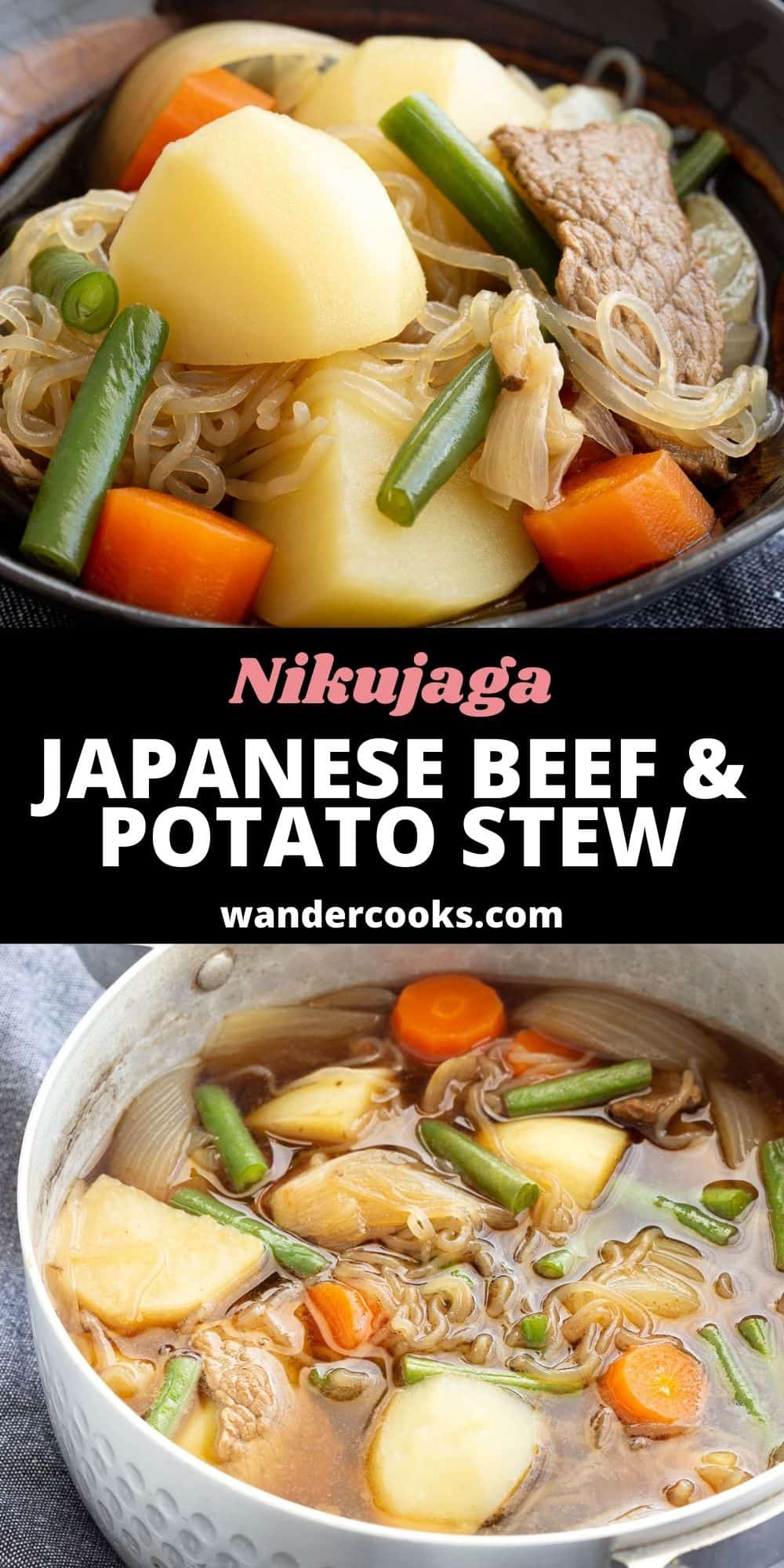

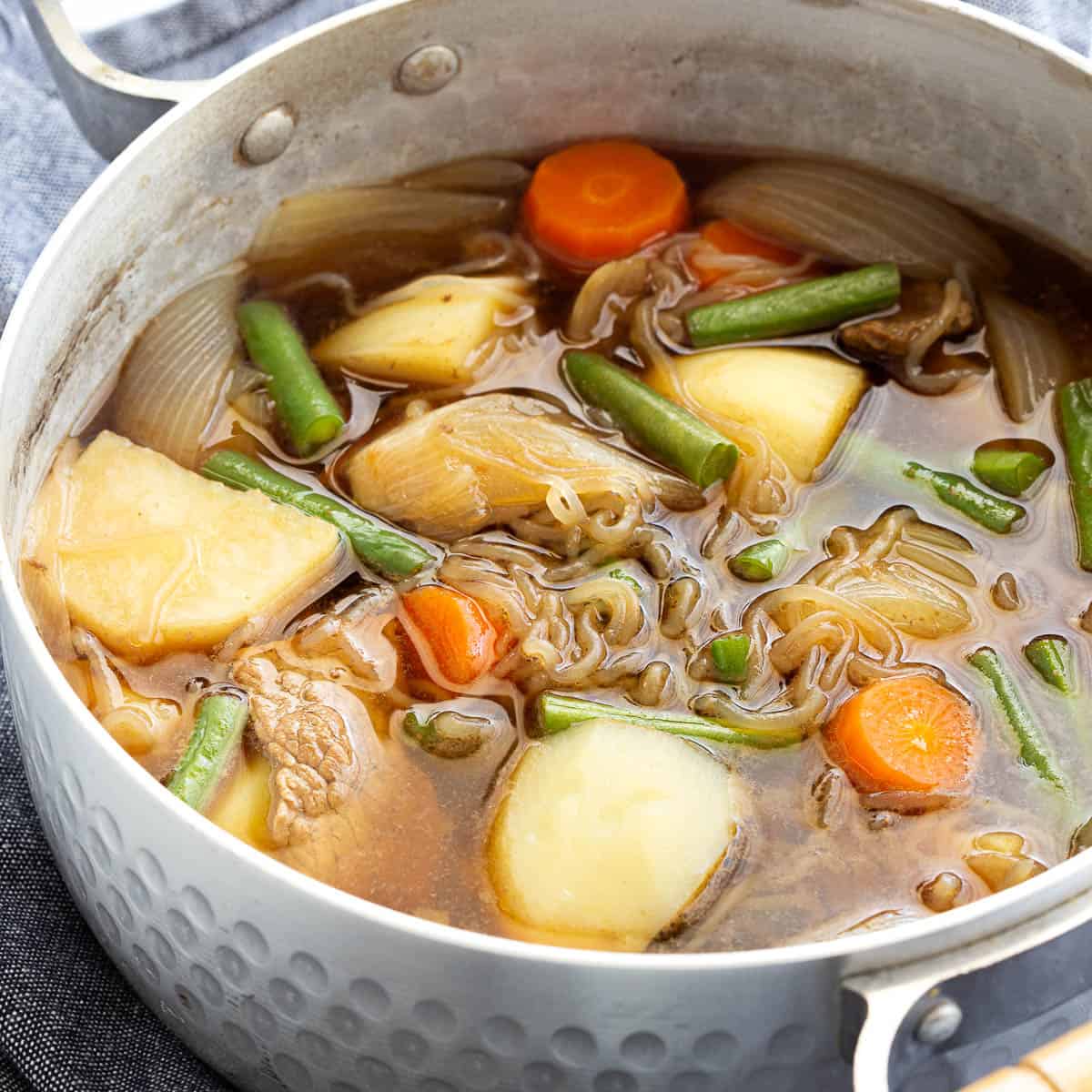



4 Comments
Shannon Robinson
12/07/2023 at 5:58 amI first had this dish when I was living in university dorms. My roommate was a mature Japanese student. It’s amazing. Glad to have found the recipe again.
Wandercooks
12/07/2023 at 3:29 pmThat’s awesome Shannon! Hope you enjoy recreating the dish. You’ll have to let us know what you think!
Tam
19/07/2022 at 12:52 pmThis is absolutely delicious. I made mine in the morning and used thinly sliced pork instead of beef, then added enoki mushrooms near the end. I let it cool and refrigerated it until dinner time. Highly recommend this step as it really makes a difference to the depth of flavour in the dish. Thank you for such a great recipe, I’ll be making this again!
Wandercooks
26/07/2022 at 7:41 pmSounds amazing Tam, love your take on it and cool idea to pre-cook it to let all those flavours soak in. Yum!